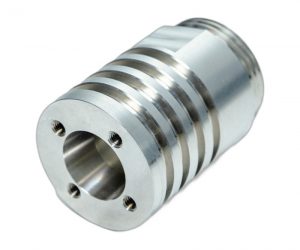Plastic mold processing refers to the processing of plastic molding and plastic blank making tools. It consists of upper mold and lower mold. In our mold factory, plastic mold processing is a very important process. Die processing refers to the processing of forming and blank making tools, and also includes shearing die and die cutting die. What is the processing flow of plastic mold?
Generally, the mold consists of upper mold and lower mold. Place the steel plate between the upper and lower molds, and realize the forming of materials under the action of the press. When the press is opened, the workpiece determined by the mold shape will be obtained or the corresponding waste materials will be removed.
Specific plastic mold processing process:
- Bottom surface processing and processing quantity guarantee;
- Casting blank datum alignment, 2D and 3D profile allowance inspection;
- Rough machining of 2D and 3D profiles, machining of non installation and non working planes (including safety platform surface, buffer mounting surface, pressing plate plane and side datum plane);
- Before semi finishing, the side reference surface shall be correctly located to ensure accuracy;
- Semi finish 2D and 3D profiles, finish all kinds of installation working surfaces (including the installation surface and contact surface of the limit block, the installation surface and back side of the insert, the installation surface of the punch, the installation surface and back side of the waste cutter, the installation surface and contact surface of the spring, all kinds of travel limiting working surfaces, the installation surface and back side of the wedge), semi finish all kinds of guide surfaces and guide holes, leave margin for finishing the process reference holes and height reference surfaces, and record the data;
- Inspect and recheck the machining accuracy;
- Bench worker inlaying process;
- Before finishing, align the datum plane of the process datum hole and check the allowance of the insert;
- Finish machining profile 2D and 3D, side punching profile and hole location, finish machining process datum hole and height datum, finish machining guide surface and guide hole;
- Check and recheck the machining accuracy.
The creation of injection-molded plastic parts is a sophisticated manufacturing process, far exceeding the simplistic notion of merely pouring molten plastic into a cavity. It's a tightly orchestrated sequence of stages, each demanding precision and expertise to yield high-quality, consistent products. Let's examine each phase in detail:
The seemingly simple act of creating a plastic part through molding belies a complex and highly specialized manufacturing process. This process, far from a single operation, is a meticulously orchestrated sequence of steps, each demanding precision and expertise to yield a high-quality final product. Let's delve into the intricacies:
1. Mold Design and Fabrication: The Blueprint of Precision: The journey begins not on the factory floor, but in the digital realm. Experienced engineers utilize sophisticated Computer-Aided Design (CAD) software to create three-dimensional models of the mold, a process demanding a deep understanding of material properties, injection molding principles, and the intricacies of part geometry. These virtual blueprints meticulously detail every nuance of the mold cavity, including subtle draft angles, intricate undercuts, and the precise placement of ejection mechanisms. The subsequent fabrication of the mold, often involving advanced machining techniques like CNC milling and Electrical Discharge Machining (EDM), requires specialized expertise and high-precision equipment to achieve the tolerances necessary for consistent, high-quality parts. The mold itself represents a substantial investment, a highly engineered tool capable of producing thousands, even millions, of identical parts.
2. Material Preparation: Tailoring the Polymer: The selection of the appropriate resin is far from arbitrary. It's a critical decision driven by the intended application's performance requirements. Factors such as tensile strength, impact resistance, chemical resistance, temperature stability, and aesthetic considerations all influence the choice of polymer. Moreover, the resin may require pre-processing, such as drying to remove absorbed moisture that could lead to defects during molding. Additives, colorants, and reinforcing agents might be incorporated to fine-tune the final product's properties and appearance. This stage requires a thorough understanding of polymer science and material behavior.
3. Injection Molding: The Heart of the Process: This stage represents the core of the operation. The precisely metered and heated resin is injected under high pressure into the mold cavity, a process demanding precise control over injection pressure, melt temperature, and holding time to ensure consistent part quality. The mold's temperature profile, often controlled through sophisticated multi-zone systems, governs the cooling rate, significantly influencing the part's crystallinity, residual stresses, and ultimately, its dimensional accuracy and mechanical properties. This is a dynamic process, requiring real-time monitoring and adjustment to maintain optimal parameters.
4. Ejection and Demolding: A Delicate Extraction: Once the resin has solidified, the molded part must be carefully extracted from the mold cavity. This often involves sophisticated ejection systems, incorporating pins, slides, and other mechanisms to prevent damage to the part. The design of these systems is crucial to avoid part deformation or surface marring, and their proper functioning is paramount to maintaining production efficiency.
5. Post-Processing: Refining the Final Product: The demolded parts may require additional processing to achieve the desired surface finish and functionality. This might include trimming excess material (gating), polishing, painting, or other surface treatments. These steps enhance the aesthetic appeal and often improve the part's performance characteristics. The selection of appropriate post-processing techniques is crucial to achieving the desired final product quality.
6. Quality Assurance: Ensuring Perfection: Rigorous quality control measures are implemented throughout the entire process, but final inspection is crucial. Dimensional accuracy, surface finish, and adherence to specifications are verified using a variety of metrology tools and techniques. Only parts meeting stringent quality standards are deemed acceptable for use. This stage ensures that the final product meets the required performance and aesthetic standards.
In conclusion, plastic molding is a sophisticated, multi-stage manufacturing process demanding precision and expertise at every step. The integration of advanced technologies, meticulous quality control, and a deep understanding of material science and engineering principles are essential for producing high-quality plastic parts that meet the demanding requirements of diverse industries.





